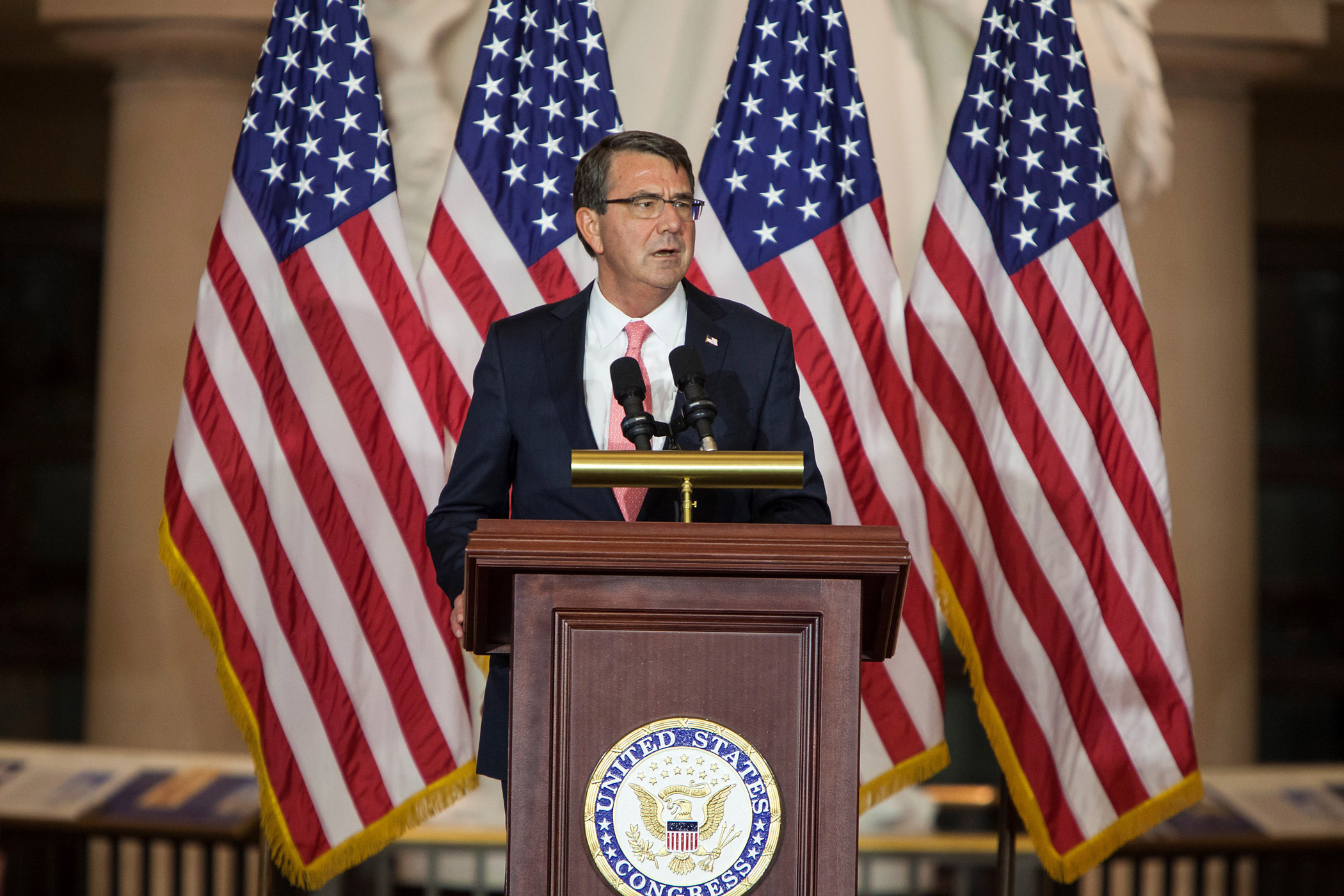
The Pentagon announced Monday that it will stop barring transgender people from serving in the military.
In a statement, Secretary of Defense Ash Carter said that the existing regulations against transgender service members were “outdated” and “causing uncertainty” that distracts troop commanders.
“We have transgender soldiers, sailors, airmen, and Marines — real, patriotic Americans — who I know are being hurt by an outdated, confusing, inconsistent approach that’s contrary to our value of service and individual merit,” he said.
Carter said the Pentagon will create a working group over the next six months to study “the policy and readiness implications of welcoming transgender persons to serve openly,” to be led by Under Secretary of Defense for Personnel and Readiness, Brad Carson.
The language of the statement suggests that the working group has not been convened to determine whether transgender people will be able to serve openly, but simply to determine how the policy should be carried out. “At my direction, the working group will start with the presumption that transgender persons can serve openly without adverse impact on military effectiveness and readiness, unless and except where objective, practical impediments are identified,” Carter said.
In the meantime, according to the statement, any soldiers suggested for discharge on the basis of their transgender identity will be referred to the top of the chain and reviewed by Under Secretary Carson. In an earlier story about the details, the Associated Press reported that transgender persons would be able to serve during the six month study period by the working group.
Transgender advocates and experts on military policy say that such a review is necessary to work out the details of how best to incorporate transgender service, which will involve decisions about things like uniforms and medical best practices that were not at issue in the repeal of Don’t Ask Don’t Tell. Some transgender soldiers decide to take hormones and get surgeries during transition.
“With [DADT], all you needed to do was snap your fingers to lift the ban. It was clear how repeal would work. In this case it makes sense to review administrative policies to guide commanders in inclusive policy,” said Aaron Belkin, executive director of the Palm Center, a think tank that promotes the study of LGBT people in the armed forces. “Every administrative policy needs to be discussed from grooming styles to uniforms. You don’t need to do a lot, but you do need to sit down and take a look,” he said. In August, the Palm Center issued a report offering a road map to the kinds of new policies that may need to be written to provide a smooth path to transgender military service.
Other advocates cheered the lifting of the ban. “This change is happening because Secretary Carter and other senior civilian and uniform leaders in the Pentagon have gotten to know transgender service members and they’ve seen how this ban hurts them and their families, and how it hurts units and military readiness,” said Allyson Robinson, the director of policy at SPARTA, a group of LGBT people who have served in the military. “They are not satisfied to have a military says stand for inclusion and quality and doesn’t live up to those values when it comes to transgender Americans.”
President Obama has previously hinted at his support for such a measure, and Secretary Carter said at a Pentagon Pride event last month that the military must get to “a place where no one serves in silence, and where we treat all our soldiers, sailors, airmen and Marines with the dignity, and the respect, that they deserve,” according to NBC News. The Williams Institute at UCLA estimates that 15,500 transgender people currently serve in the armed forces.
More Must-Reads from TIME
- Cybersecurity Experts Are Sounding the Alarm on DOGE
- Meet the 2025 Women of the Year
- The Harsh Truth About Disability Inclusion
- Why Do More Young Adults Have Cancer?
- Colman Domingo Leads With Radical Love
- How to Get Better at Doing Things Alone
- Michelle Zauner Stares Down the Darkness
Contact us at letters@time.com